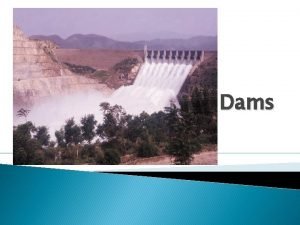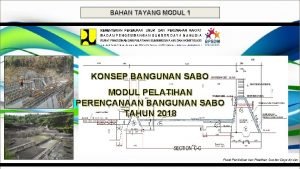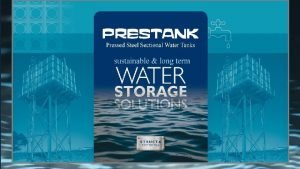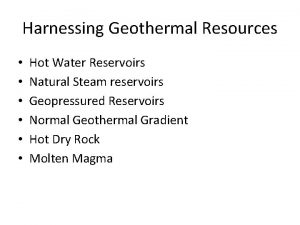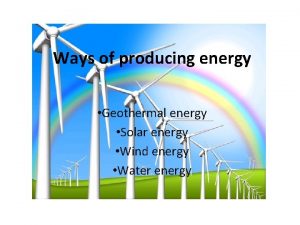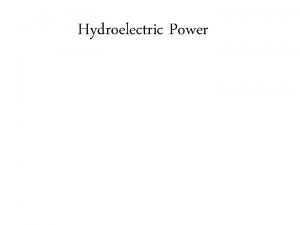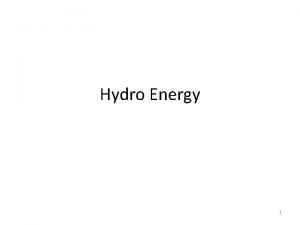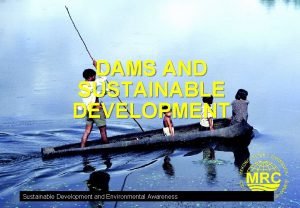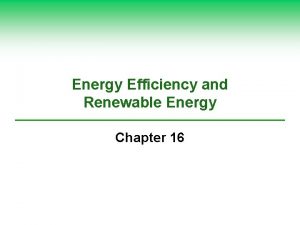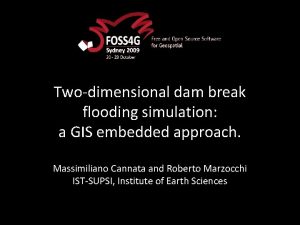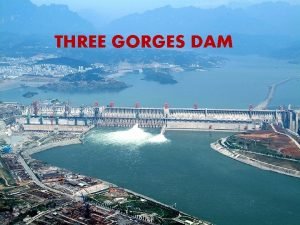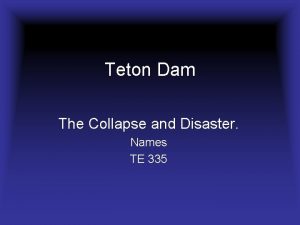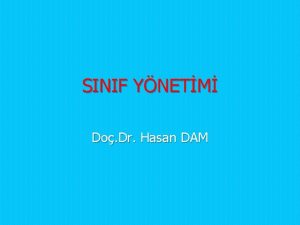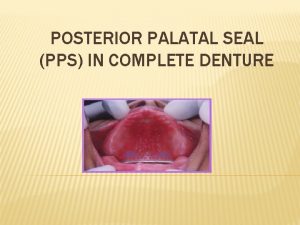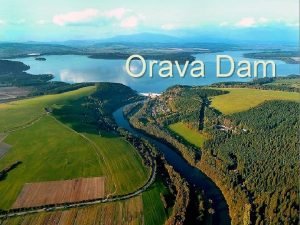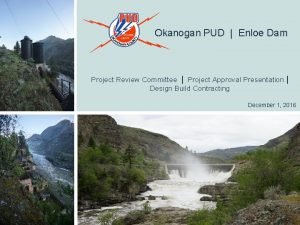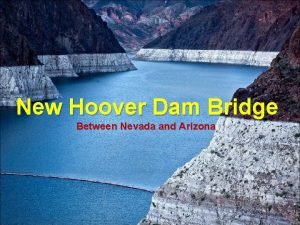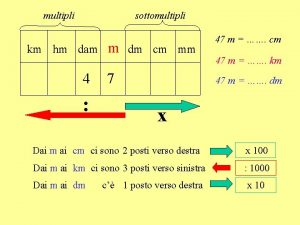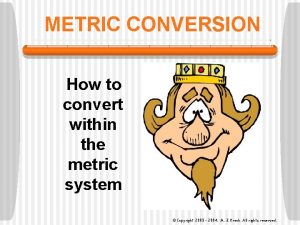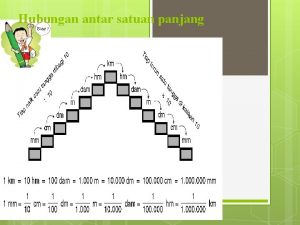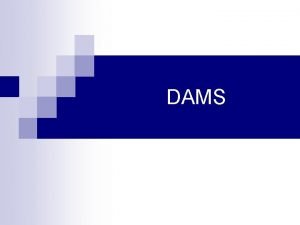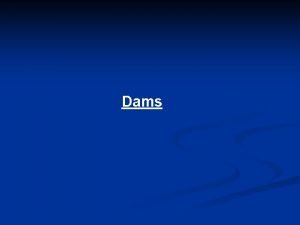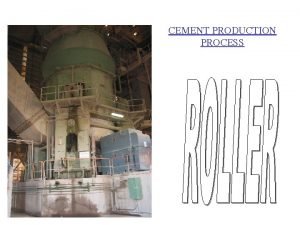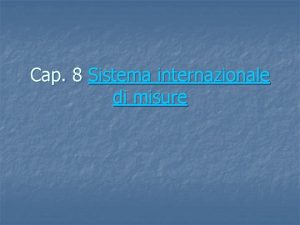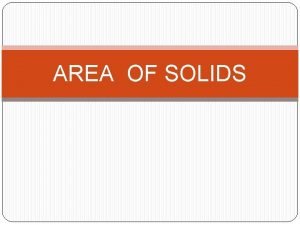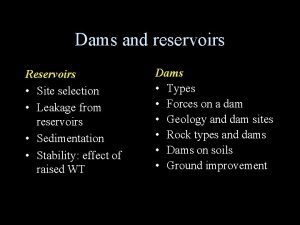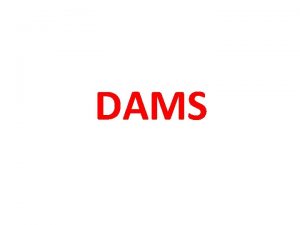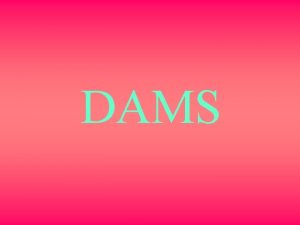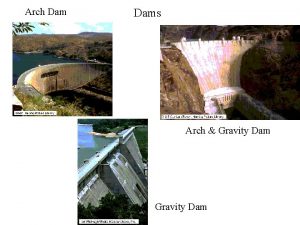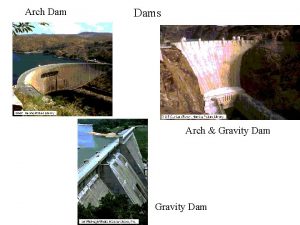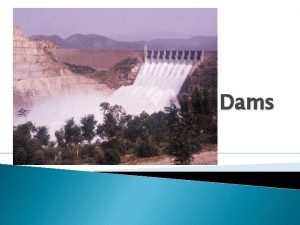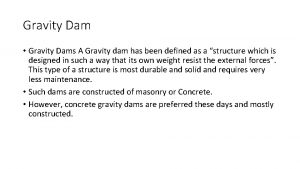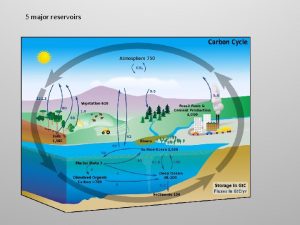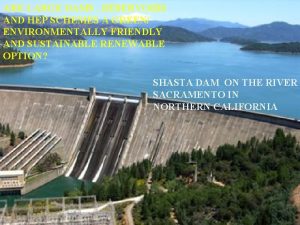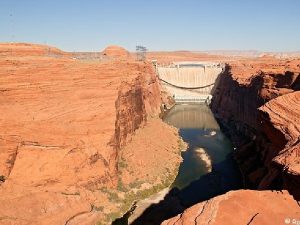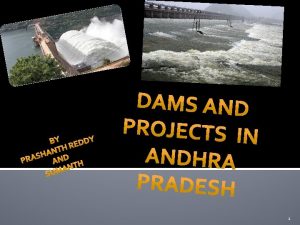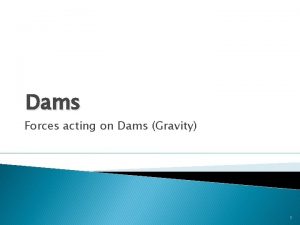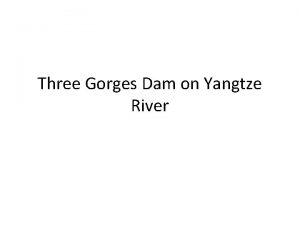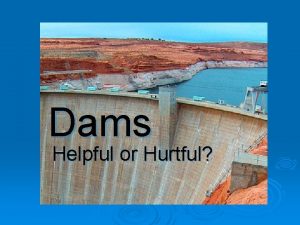RESERVOIRS AND DAMS Dams l Dam is a





















































- Slides: 53

RESERVOIRS AND DAMS

Dams l Dam is a solid barrier constructed at a suitable location across a river valley to store flowing water. l Storage of water is utilized for following objectives: l Hydropower l Irrigation l Water for domestic consumption l Drought and flood control l For navigational facilities l Other additional utilization is to develop fisheries

Structure of Dam Crest Upstream Down stream Spillway (inside dam) MWL Max. level NWL Normal water level Free board Sluice way Gallery Heel Toe

l Emergency Spillway: this type of spillway is designed for extreme flood conditions. l Chute : is sloping/sliding part of a spillway. l Stilling Basin: is collecting pond for flowing water by spillway. l Training Wall: side walls of a spillway to stop overtopping of water by sides of spillway.

Types of Spillway l Chute spillway: Chute spillways are common and basic in l l design as they transfer excess water from behind the dam down a smooth decline into the river below. Most often, they are lined on the bottom and sides with concrete to protect the dam and topography. They may have a controlling device and some are thinner and multiply lined if space and funding are tight. In addition, they are not always intended to dissipate energy like stepped spillways. Chute spillways can be ingrained with a baffle of concrete blocks but usually have a 'flip lip' and/or dissipator basin which creates hydraulic jump protecting the toe of the dam from erosion.




Stepped spillways l These have been used for over 3, 000 years. Recently, new construction materials (e. g. RCC, gabions) and design techniques (e. g. embankment overtopping protection) have increased the interest in stepped spillways. l The steps produce considerable energy dissipation along the chute and reduce the size of the required downstream energy dissipation basin. l Research is still active on the topic, with newer developments on embankment dam overflow protection systems , converging spillways and small weir design.


Bell-mouth spillways l Some spillways are designed like an inverted bell so that water can enter all around the perimeter. l These uncontrolled spillway devices are also called morning glory, plughole, glory hole or bell-mouth spillways. l In areas where the surface of the reservoir may freeze, bell-mouth spillways are normally fitted with ice-breaking arrangements to prevent the spillway from becoming ice-bound. l Chaffey Dam, located near Tamworth, New South Wales in Australia has a classic example of an inverted-bell spillway. It was the first one of its kind in Australia.




DAMS l Types of Dams ¡Embankment Dams ¡Concrete Dams l. Gravity Dam l. Buttress Dam l. Arch Dam ¡Composite Dams

Embankment Dam l An embankment dam is a massive artificial water barrier. l It is typically created by the emplacement and compaction of a complex semi-plastic mound of various compositions of soil, sand, clay and/or rock. l Such a dam is composed of fragmented independent material particles. The friction and interaction of particles binds the particles together into a stable mass rather than the use of a cementing substance.

Earth and Rock Fill Dams: TYPES OF Embankment DAMS • They are trapezoidal in shape • Earth dams are constructed where the foundation or the underlying material or rocks are weak to support the masonry dam or where the suitable competent rocks are at greater depth. • Earthen dams are relatively smaller in height and broad at the base • They are mainly built with clay, sand gravel, hence they are also known as Earth fill dam or Rock fill dam




TYPES OF Concrete DAMS • Gravity Dams: Reservoir Force • These dams are heavy and massive wall-like structures of concrete in which the whole weight acts vertically downwards As the entire load is transmitted on the small area of foundation, such dams are constructed where rocks are competent and stable. • Advantage: simple design • Disadvantage: large amount of materials and construction



Buttress Dam: TYPES OF DAMS • Buttress Dam – Is a gravity dam reinforced by structural supports • Buttress - a support that transmits a force from a roof or wall to another supporting structure This type of structure can be considered even if the foundation rocks are little weaker • Advantages: – Less material required – Strong rock foundation not required (as for arch dams) • Disadvantage– Height limitations – Construction difficulty



Arch Dams: TYPES OF DAMS • These type of dams are concrete or masonry dams which are curved or convex upstream in plan • This shape helps to transmit the major part of the water load to the abutments • Arch dams are built across narrow, deep river gorges, but now in recent years they have been considered even for little wider valleys. • Advantage: economical (less material required) • Disadvantage: requires “steep” terrain (v-shaped valleys















Material available: l A failed dam is not only a waste of effort, it loses future income and security. l The quantity and suitability of materials occurring at a dam site can only be reliably determined by test performed on material. Objectives include: l How to access materials; l How to evaluate materials; l Strengths and weaknesses of various materials.

l In assessing material at a potential site the following questions need answering: l What range of materials is available? l Are there suitable materials available? l Is there sufficient material for construction requirements? l Are there potential site weaknesses associated with layers of naturally occurring materials?

Types of Material: l Cores: are used to prevent water passing through the dam structure. They have low or very low permeability e. g. 10 -5 cm/s or lower. They must not be collapsible, soluble or contains organic matter and they should be easily compactable. Clay and Silt or concrete are suitable material. l Sand with clay content, PI 15 -35 may also be used as alternative. Other include marl and argilites.

l Rockfills and ripraps: The purpose of rockfill is to transmit strength and stability to dam as well as protecting it from erosion. Dam shoulder are usually built with rockfill, material strength requires 50 -150 Mpa and should be well graded. l Filter and drains: are used to prevent core from being eroded and to allow drainage through dam. Although volume is less than other materials, but properties and specifications are much more demanding.

l The material should be granular, very strict grading, with an absence of fines, with high strength, physical and chemical stability. l Aggregates: concret dam require large quantities of aggregates which must come quarries or borrow areas located near dam. l This material should have 25 kn/m 3, uniaxial compressive strength >24 mpa, water absorption <3% and minimum solubility. l Its mineralogical composition should not produce adverse reactions with concrete.

SURFACE RESERVOIRS l Sedimentation l Landslide l Leakage l Seismicity




Teton dam


THANKS
 Rigid and non rigid dams
Rigid and non rigid dams Perbedaan sabo dam dan check dam
Perbedaan sabo dam dan check dam Pressed steel sectional water tank
Pressed steel sectional water tank Natural steam reservoirs
Natural steam reservoirs Advantages and disadvantages of dams
Advantages and disadvantages of dams Roma tre dams
Roma tre dams Types of dams
Types of dams How do dams generate electricity brainpop
How do dams generate electricity brainpop Fdr election map
Fdr election map Forces acting on dams
Forces acting on dams Dams design
Dams design Uses of dams
Uses of dams Hydrostatic uplift on dams
Hydrostatic uplift on dams Vertical gates in dams
Vertical gates in dams Nick dams
Nick dams Roma tre dams
Roma tre dams Tasmanian dams case
Tasmanian dams case Chapter 36 moisture control short answers
Chapter 36 moisture control short answers Dam benefits and problems
Dam benefits and problems Advantages and disadvantages of dam
Advantages and disadvantages of dam Sitecore dam integration
Sitecore dam integration Cm mm km
Cm mm km Hoover dam break simulation
Hoover dam break simulation Mareges dam
Mareges dam Teton dam tunnels
Teton dam tunnels Postdam sahası nedir
Postdam sahası nedir Hasan dam
Hasan dam Escala km hm dam m dm cm mm
Escala km hm dam m dm cm mm Denture vibrating line
Denture vibrating line Titik sudut
Titik sudut Dundee lake nj
Dundee lake nj Orava dam
Orava dam Enloe dam
Enloe dam Bridge over hoover dam pictures
Bridge over hoover dam pictures Km hm cm
Km hm cm Khdudcm
Khdudcm Dental dam hole punch sizes
Dental dam hole punch sizes Niat tawaf wada umrah
Niat tawaf wada umrah Cuales son las medidas de longitud usadas en venezuela
Cuales son las medidas de longitud usadas en venezuela Km hm dam
Km hm dam Approach channel in dam
Approach channel in dam Escala km hm dam m dm cm mm
Escala km hm dam m dm cm mm Escala como calcular
Escala como calcular Dam construction in image processing
Dam construction in image processing Death of naturalist poem
Death of naturalist poem Butress dam
Butress dam Kingsley dam
Kingsley dam Stella dam
Stella dam Vertical roller mill diagram
Vertical roller mill diagram Km hm dam m dm cm mm
Km hm dam m dm cm mm Andy van dam
Andy van dam Metric stairs
Metric stairs Denture bearing area
Denture bearing area Aimbrief
Aimbrief
